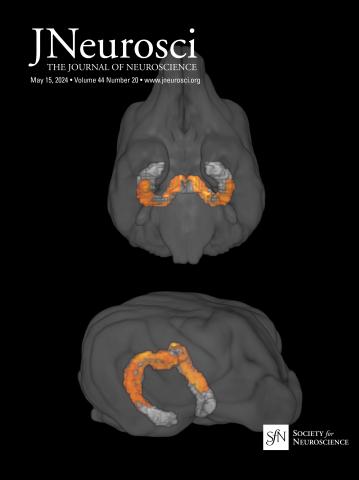抑制rho相关激酶ROCK1和ROCK2作为重新激活弗里德赖希共济失调中被抑制的FXN基因的治疗策略。
IF 4
2区 医学
Q1 NEUROSCIENCES
引用次数: 0
摘要
弗里德赖希共济失调(FA)是一种常染色体隐性遗传病,其特点是进行性损害神经系统和严重的心脏异常。该疾病是由FXN基因第一个内含子中的GAA•TTC三重重复扩增引起的,这导致FXN转录的表观遗传抑制和FXN (frataxin)蛋白的减少,从而导致线粒体功能障碍。促进FXN抑制的因子和途径代表了潜在的治疗靶点,其抑制将恢复FXN转录和frataxin蛋白水平。在这里,我们进行了基于候选RNAi筛选,以鉴定激酶,这是一类高度可药物化的蛋白质,当敲低时上调FXN的表达。使用这种方法,我们确定Rho激酶ROCK1是FXN抑制所需的关键因子。shrna介导的ROCK1或相关激酶ROCK2的敲低可使FA患者衍生的诱导多能干细胞(iPSCs)、分化的神经元和心肌细胞中的FXN mRNA和frataxin蛋白水平升高至正常细胞的水平。我们证明,小分子ROCK抑制剂,包括fda批准的药物白莫硫地尔和法舒地尔,在培养的FA iPSCs、神经元、心肌细胞和FA患者原代成纤维细胞中重新激活FXN表达,并改善这些细胞类型中的特征性线粒体缺陷。值得注意的是,用白莫硫地尔或法舒地尔处理转基因FA小鼠,无论性别,都能上调FXN的表达,改善脑和心脏组织的线粒体缺陷,并改善运动协调性和肌肉力量。总的来说,我们的研究确定了ROCK激酶是FXN表达的关键抑制因子,并提供了FDA批准的ROCK抑制剂可能被重新用于治疗FA的临床前证据。弗里德里希共济失调是一种由表观遗传抑制frataxin (FXN)基因引起的衰弱性疾病,可导致神经变性和心肌病。通过RNA干扰筛选,我们发现ROCK1和ROCK2激酶是FXN表达的关键抑制因子,使它们成为上调患者源性细胞中FXN的有希望的治疗靶点。使用小分子ROCK抑制剂(包括fda批准的药物belumosudil和临床晚期法舒地尔)治疗,可恢复frataxin水平,缓解线粒体缺陷,并改善细胞和动物模型中的疾病表型。这些发现确立了ROCK激酶作为弗里德里希共济失调治疗的靶点,并为重新利用现有ROCK抑制剂开辟了新的途径,值得临床探索。本文章由计算机程序翻译,如有差异,请以英文原文为准。
Inhibition of Rho-associated kinases ROCK1 and ROCK2 as a Therapeutic Strategy to Reactivate the Repressed FXN Gene in Friedreich Ataxia.
Friedreich ataxia (FA) is an autosomal recessive disease characterized by progressive damage to the nervous system and severe cardiac abnormalities. The disease is caused by a GAA•TTC triplet repeat expansion in the first intron of the FXN gene, which results in epigenetic repression of FXN transcription and reduction in FXN (frataxin) protein which results in mitochondrial dysfunction. Factors and pathways that promote FXN repression represent potential therapeutic targets whose inhibition would restore FXN transcription and frataxin protein levels. Here, we performed a candidate-based RNAi screen to identify kinases, a highly druggable class of proteins, that when knocked down upregulate FXN expression. Using this approach, we identified Rho kinase ROCK1 as a critical factor required for FXN repression. ShRNA-mediated knockdown of ROCK1, or the related kinase ROCK2, increases FXN mRNA and frataxin protein levels in FA patient-derived induced pluripotent stem cells (iPSCs) and differentiated neurons and cardiomyocytes to levels observed in normal cells. We demonstrate that small molecule ROCK inhibitors, including the FDA-approved drug belumosudil and fasudil, reactivate FXN expression in cultured FA iPSCs, neurons, cardiomyocytes, and FA patient primary fibroblasts, and ameliorate the characteristic mitochondrial defects in these cell types. Remarkably, treatment of transgenic FA mice of both sexes with belumosudil or fasudil upregulates FXN expression, ameliorates the mitochondrial defects in the brain and heart tissues, and improves motor coordination and muscle strength. Collectively, our study identifies ROCK kinases as critical repressors of FXN expression and provides preclinical evidence that FDA approved ROCK inhibitors may be repurposed for treatment of FA.Significance Statement Friedreich ataxia is a debilitating disorder caused by epigenetic repression of the frataxin (FXN) gene, leading to neurodegeneration and cardiomyopathy. Through an RNA interference screen, we identified ROCK1 and ROCK2 kinases as critical repressors of FXN expression, making them promising therapeutic targets for upregulating FXN in patient-derived cells. Treatment with small-molecule ROCK inhibitors, including the FDA-approved drug belumosudil and clinically advanced fasudil, restores frataxin levels, alleviates mitochondrial defects, and improves disease phenotypes in cells and animal models. These findings establish ROCK kinases as targets for Friedreich ataxia therapy and open new avenues for repurposing existing ROCK inhibitors, warranting clinical exploration.
求助全文
通过发布文献求助,成功后即可免费获取论文全文。
去求助
来源期刊

Journal of Neuroscience
医学-神经科学
CiteScore
9.30
自引率
3.80%
发文量
1164
审稿时长
12 months
期刊介绍:
JNeurosci (ISSN 0270-6474) is an official journal of the Society for Neuroscience. It is published weekly by the Society, fifty weeks a year, one volume a year. JNeurosci publishes papers on a broad range of topics of general interest to those working on the nervous system. Authors now have an Open Choice option for their published articles
 求助内容:
求助内容: 应助结果提醒方式:
应助结果提醒方式:


